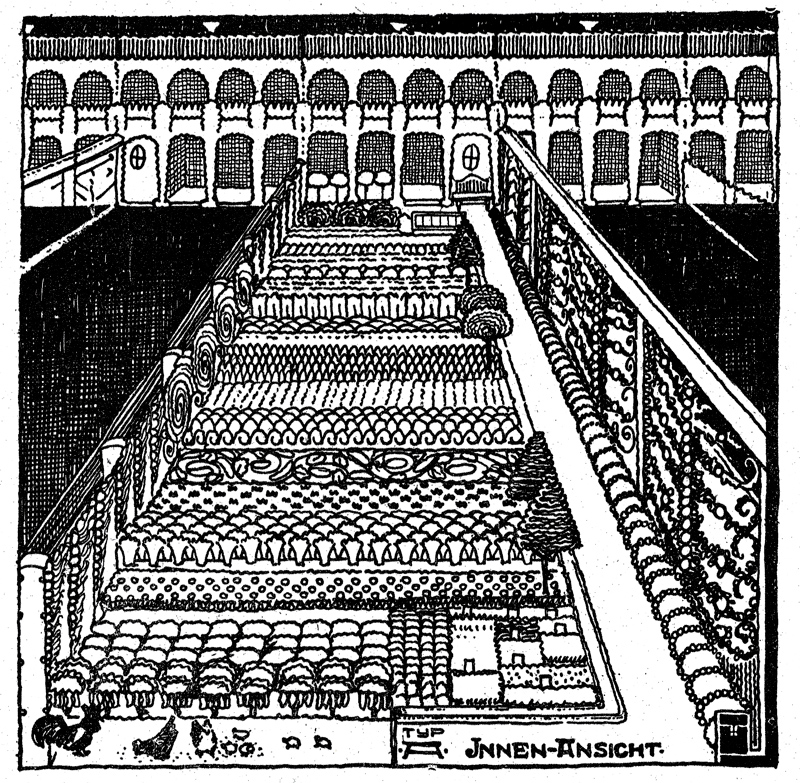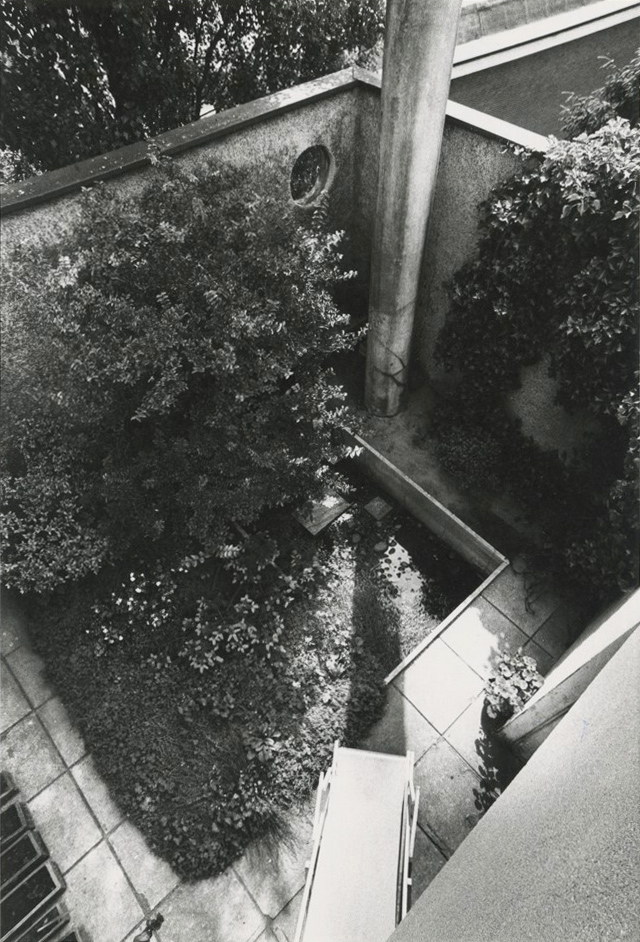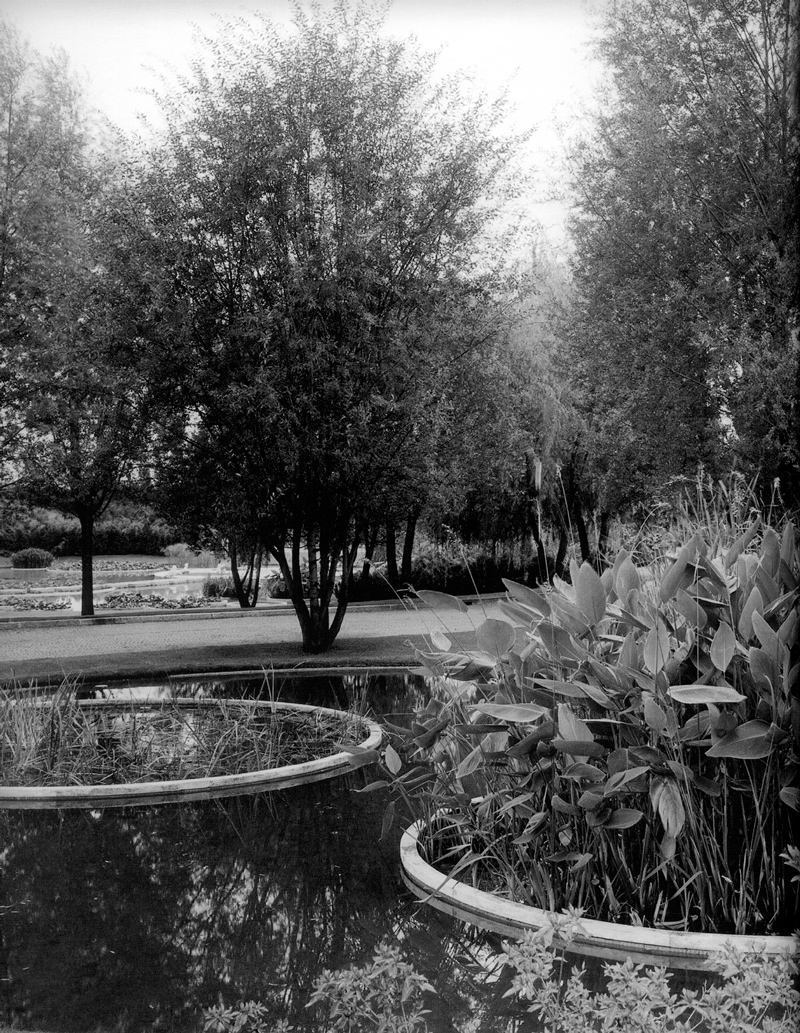Fig.
1 - Leberecht Migge, Scheme for the Kleinsiedlungen, the rear garden.
Image taken from the booklet "Jedermann Selbstversorgers", Jena 1918

Fig.
2 - Patio on the roof-garden of the Figini house in the journalists' village in Milan, 1933-35.

Fig.
3 - The park of Villa fiorita in Saronno by Pietro Porcinai, 1952-58
